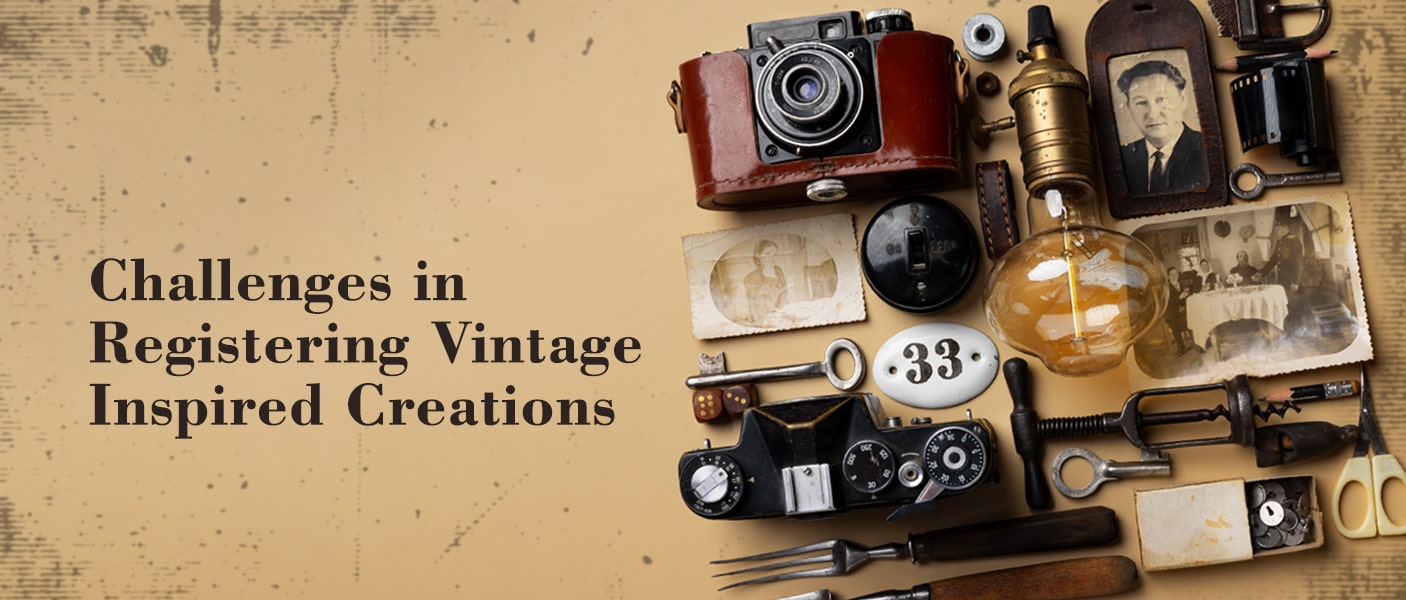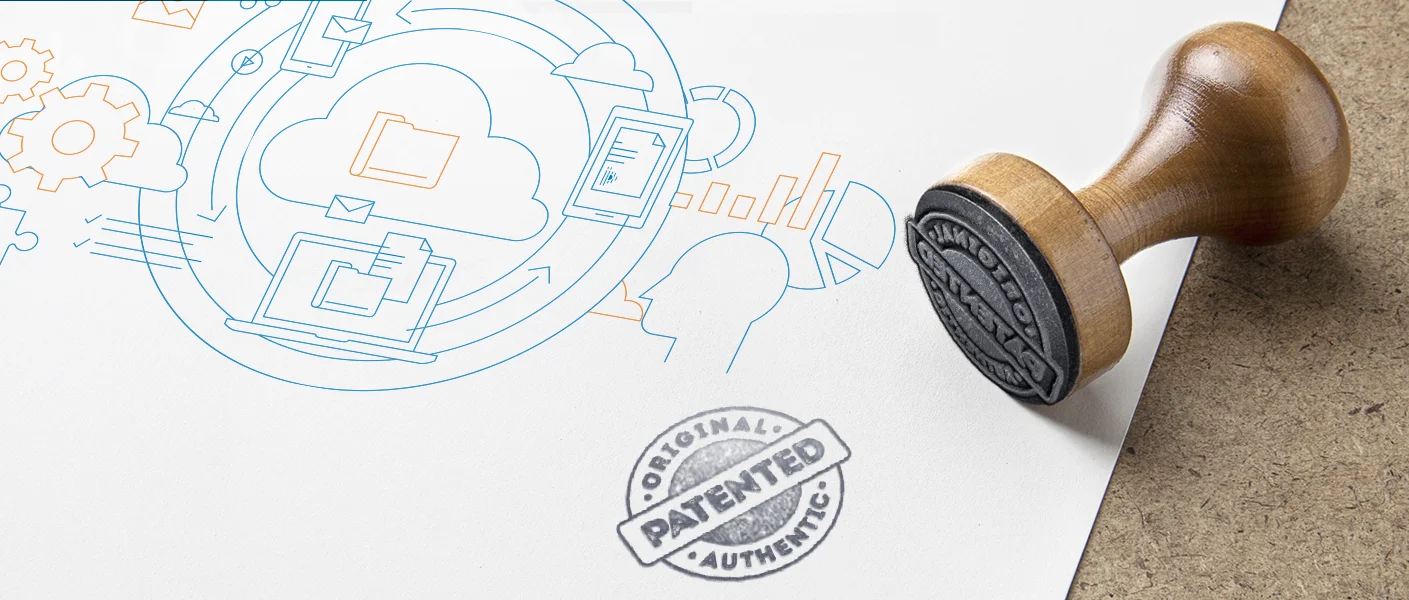Challenges in Registering Vintage-Inspired Creations
February 28, 2025 By Khyati DaveVintage-inspired designs beautifully blend nostalgia with contemporary fashion, offering a timeless appeal. However, when it comes to intellectual property rights (IPR), designers must navigate complex legal challenges to protect their work. From ensuring originality to avoiding trademark conflicts, the process of securing IPR for retro-style creations requires careful consideration.
This blog explores the key IP challenges and solutions in registering vintage-inspired designs.
Creating vintage-inspired designs involves balancing respect for the past with modern innovation. This intersection presents unique challenges when seeking intellectual property rights (IPR) protection. Designers often incorporate retro elements to evoke nostalgia and visual appeal, yet must navigate legal complexities to safeguard their work against infringement.
Design and Copyright Challenges
1. Authenticity vs. Originality:
A key challenge is maintaining the authenticity of retro elements while ensuring the design is sufficiently original to warrant copyright protection. Copyright law in India, for example, protects original artistic works, including designs in clothing and accessories, meaning designers must avoid creations that too closely resemble existing protected designs.
2. Upcycling and Transformation:
Upcycling or recycling waste materials into fashion items introduces further copyright considerations. Transforming waste materials requires careful attention to whether the changes constitute a new creative work or an infringement.
3. Lack of Clear Legal Standards:
Existing copyright and design laws may not clearly address fashion designs, especially those using basic elements like color, silhouette, or pattern. The varying requirements for originality across different legal jurisdictions complicate securing legal protection.
Trademark and Branding Issues
1. Brand Identity:
Trademarks, which protect distinctive signs like logos and names, are essential for consumers to identify sustainable and vintage-inspired fashion products. Designers need to ensure they do not infringe on existing trademarks when branding their creations.
2. Risk of Confusion:
Using similar trademarks on unrelated products can confuse consumers and dilute the distinctiveness of established brands.
Practical Techniques and Solutions
1. Achieving a Convincing Retro Aesthetic:
Creating a convincing retro aesthetic involves specific techniques. Designers may research period-accurate color palettes, add textures that simulate wear and tear, and use lighting that reflects the technology of the era. Incorporating design elements and motifs from specific periods can enhance the retro feel.
2. Registration and Legal Advice:
Designers should consider registering their creations with the design and copyright office to obtain ownership documentation. However, only copyright protection will not help if production exceeds 50 units. Consulting with legal professionals specializing in IPR can help navigate the complexities of copyright, trademark, and design rights.
3. Balancing Modern and Traditional Elements:
Consistency is important when mixing modern and traditional design elements. Ensuring similar details are present throughout a design can help create a unified and deliberate aesthetic
Enforcement and Industry-Specific Issues
Fast Fashion and Copycat Culture:
The rapid pace of the fashion industry and the prevalence of "copycat culture" create challenges for IPR protection. Designs can be quickly replicated and sold at lower prices, making it difficult to enforce IPR effectively.
1. Enforcement Difficulties:
Enforcing IPR in the fashion industry can be complex and costly. Counterfeit products often circulate online, making it challenging to identify and take action against infringers.
2. Digital Landscape Challenges:
The rise of e-commerce introduces new challenges, such as the unauthorized use of images, brand names, or trademarks. Brands need to monitor and enforce their IPR in the digital space.
Some Real-Time Examples
1. Indian Case: Sabyasachi vs. Counterfeiters
Renowned Indian designer Sabyasachi Mukherjee, known for his vintage-inspired bridal wear, has faced multiple cases of copyright, design and trademark infringement. His intricate, heritage-based designs have been frequently copied by counterfeit sellers and unauthorized boutiques. In response, Sabyasachi has taken legal action against infringers and actively educates customers on identifying authentic products. His brand’s strict enforcement of IP rights in fashion has helped maintain exclusivity and protect his vintage-inspired creations.
2. International Case: Christian Louboutin vs. YSL (Re-creating of the famous Red Soles)
Christian Louboutin is well-known for his luxury footwear featuring distinctive red lacquered soles, which he trademarked. The trademark has been the subject of numerous legal battles, particularly against brands that produce shoes with similar red soles. For instance, in the case against Yves Saint Laurent (YSL), the court ruled that YSL's all-red shoe did not infringe on Louboutin's trademark because it did not feature a contrasting color between the sole and upper, which is a key aspect of Louboutin’s trademark claim.
3. International Case: Levi’s vs. Guess (Trademark Battle Over Vintage Denim)
The Levi Strauss & Co. vs. Guess Inc. case is a well-known trademark dispute involving vintage denim designs. Levi’s, a brand with a rich history in denim since the 19th century, sued Guess for copying its signature "Arcuate" stitching pattern on jeans’ back pockets. Levi’s argued that Guess' use of a similar design misled consumers and diluted their trademark. After years of litigation, Levi’s successfully defended its trademark on vintage denim aesthetics, reinforcing the importance of protecting classic designs in the fashion industry.
Final Thoughts
Trademarking vintage-inspired designs is a delicate dance between honoring timeless aesthetics and crafting something uniquely your own. Designers must navigate the maze of copyrights, trademarks, and legal nuances — all while making their work shine.
Partnering with an experienced IPR firm, like Parker & Parker Advocates, can provide invaluable guidance in protecting your creations. By embracing smart design strategies, seeking expert legal advice, and staying proactive in safeguarding their work, creatives can thrive in the ever-evolving world of fashion.





